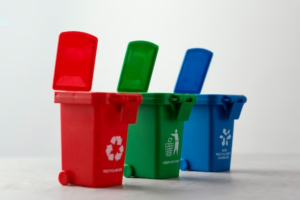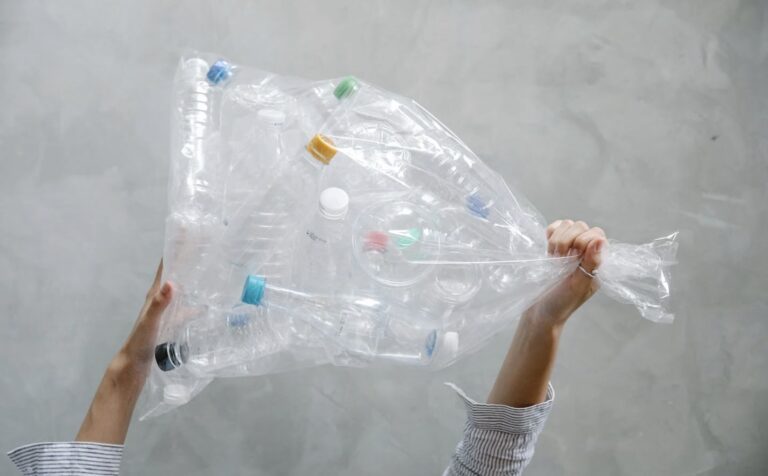Recycling, a process once optional, has now become pivotal in our collective pursuit of a sustainable future. Embracing recycling not only helps the environment but also signifies a commitment to a greener and more sustainable future for generations to come.
The Evolution of Waste and Recycling Processes
Waste management and recycling have seen significant shifts over the decades, propelled by both technological advancements and increasing environmental concerns. Early civilizations had rudimentary systems of waste disposal. Typically, waste was disposed of in pits, far away from habitation areas. However, with the rise of urban centers, waste management became a growing challenge. By the 19th century, waste often accumulated in streets, leading to health crises. This necessitated the creation of organized waste collection and disposal systems.
Fast forward to the mid-20th century, post-WWII, the industrial boom and growth in consumerism led to unprecedented waste generation. The “throwaway” culture was at its peak. Packaging materials like plastics began to dominate, most of which were non-biodegradable. It was evident that traditional disposal systems were inadequate. This realization was the catalyst for the evolution of the modern recycling industry.
Initial recycling processes were labor-intensive, relying heavily on manual sorting. Technological advancements, however, brought automation into the process, increasing efficiency. Innovations like single-stream recycling, where all recyclables can be mixed together, simplified the process for consumers, boosting recycling rates. Today, the recycling industry not only transforms waste into new products but also innovates continually to optimize processes, reduce contamination, and cater to a broader range of materials.
Impacts on Landfill Reduction
The rise in global waste generation poses a tremendous challenge for landfills. Landfills, essentially vast pits where waste is dumped and later covered, have limited lifespans. As they fill up, new ones need to be established, a process that consumes vast tracts of land. The adverse environmental impacts of landfills are undeniable. Harmful leachate, resulting from the decomposition of waste, can contaminate groundwater. Moreover, as mentioned previously, the anaerobic decomposition of organic waste produces methane, exacerbating global warming.
Recycling’s potential to significantly reduce landfill usage is profound. When items are recycled, they are transformed back into raw materials, which can then be repurposed into new products. This cycle means less waste heading to landfills. For example, the recycling of one tonne of paper can save approximately 17 trees and drastically cut the space required in landfills.
Moreover, recycling also reduces the need to extract new raw materials from the environment, further minimizing environmental impacts. Think of it as a double win: fewer landfills and reduced strain on natural resources.
Furthermore, certain countries have adopted policies to divert organic waste from landfills, converting it into compost or using it in biogas production. Such steps further reduce the strain on landfills.
Impacts on Landfill Reduction
Contrary to popular belief, landfills are designed for waste containment rather than its decomposition. While some organic waste breakdown happens, the anaerobic nature of landfills makes this decomposition sluggish. The swelling rate of waste creation, coupled with non-biodegradable packaging, amplifies the urgency to minimize reliance on landfills.
Addressing Climate Concerns through Recycling
Decomposing organic waste in landfills emits methane, a potent greenhouse gas with a warming potential 25 times greater than carbon dioxide. With landfills contributing to a significant fraction of a nation’s methane output, diverting organic waste from these sites can curb methane production, thus playing a crucial role in climate mitigation.
Conservation of Energy through Recycling
Using recycled materials often requires significantly less energy than processing raw materials, emphasizing the energy-saving potential of recycling. For instance, recycling aluminum can save up to 95% of the energy expended in producing new aluminum. Similarly, substantial energy savings are realized in recycling plastics, glass, and paper.
Economic Implications of Recycling
Beyond the environmental dividends, recycling offers notable economic advantages. Reduced energy consumption in manufacturing translates to decreased production expenditures. Furthermore, recycling, being a labor-intensive industry, presents a unique opportunity for job creation. Statistics reveal that recycling waste can generate substantially more employment than merely disposing of it.
Key Benefits of Recycling: A Bullet Point Overview
Resource Conservation:
- Reduces the need to harvest new raw materials;
- Limits the strain on natural ecosystems from mining and deforestation.
Energy Efficiency:
- Manufacturing products from recycled materials typically requires less energy than using new raw materials;
- Reduces greenhouse gas emissions, as less energy consumption means fewer fossil fuels burned.
Landfill Space Conservation:
- As recycling rates increase, the volume of waste sent to landfills decreases;
- Leads to longer landfill lifespans and reduced need for new landfills.
Economic Benefits:
- The recycling industry creates more jobs than waste disposal;
- Boosts local economies by promoting sustainable businesses.
Climate Control:
- By saving energy, recycling also reduces greenhouse gas emissions;
- Prevents the methane emissions resulting from decomposing waste in landfills.
Promotion of Sustainable Practices:
- Encourages manufacturers to consider product lifecycle;
- Spurs innovation in sustainable packaging and products.
Comparative Table: Recycling vs. Traditional Waste Disposal
| Features/Impact | Recycling | Traditional Waste Disposal |
|---|---|---|
| Resource Consumption | Uses existing materials | Requires new raw materials |
| Energy Consumption | Generally lower | Higher, due to extraction and processing |
| Environmental Impact | Reduced emissions and ecological footprint | Increased greenhouse gas emissions, land degradation |
| Economic Impact | Creates more jobs and can reduce production costs | Fewer jobs, potential for higher disposal costs |
| Land Use | Decreases demand on landfill space | Increases need for new landfills |
| Lifespan of Products | Encourages circular economy, products can be reused | Linear economy; products are used and discarded |
As the table illustrates, recycling offers clear advantages over traditional waste disposal in various domains. By understanding these distinctions, both individuals and industries can make informed decisions about waste management.
Conclusion: The Collective Role in Recycling
The onus of ensuring a sustainable future doesn’t lie solely with policymakers or industries; each individual plays a part. Recycling offers a viable path towards this sustainable vision, bringing with it a slew of environmental and economic benefits.








+ There are no comments
Add yours